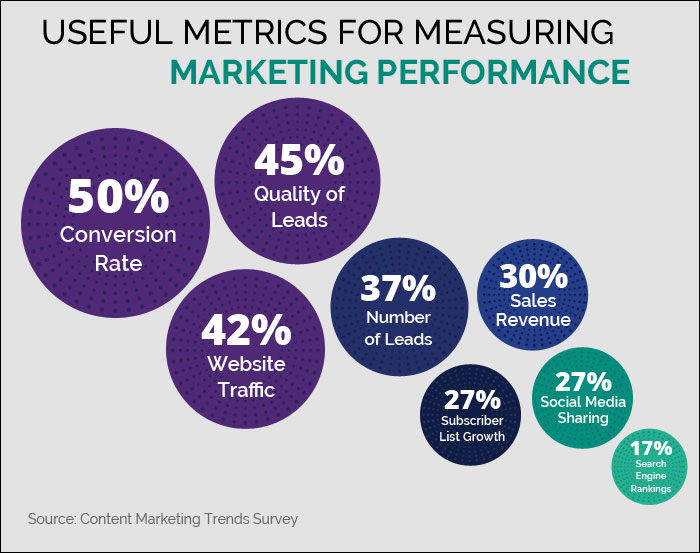5 Key Metrics That Will Transform Your Physical Therapy Practice
Posted on
Digital marketing has seen rapid growth in the past few years, but healthcare marketers still face significant challenges implementing and scaling an effective digital marketing strategy across their practice. Most notable among these obstacles is measuring the effectiveness of their marketing efforts.
Unfortunately, most medical practitioners do not have excess dollars to test new marketing ideas and communication channels. Instead, they have a limited budget and scant resources. However, by tracking these five metrics, physical therapists can utilize their budget and resources to the maximum extent possible. In addition, as a physical therapy practice owner, you will be amazed at how you can impact your marketing results. Regardless of your practice size or location, you can utilize these metrics to drive your marketing campaigns in the right direction and see incredible results.
Metric #1: Cost Per Lead (CPL)
Uninteresting as this may sound, tracking your CPL is critical. CPL helps you ascertain how effective your marketing efforts are on different channels by determining how many leads you get per marketing dollar spent.
CPL can reveal the following information:
- Which ads or posts are the most effective?
- Which channels are the most suitable?
- How well is your marketing budget being spent?
This information will further help you make comparisons. You can weigh your marketing efforts by determining where you get the biggest growth for your money, where you need to improve in order to attract more leads and how you can reduce your CPL. As you launch your digital marketing campaigns, watch and calculate your CPL and act on it to best utilize your marketing dollars.
Determining your CPL
You can calculate your CPL by dividing the money spent on the ad by the number of leads it generated during its run. It looks something like this:
Dollars spent: $1000
Leads generated: 50
CPL: $20

How can you calculate the number of leads generated?
Just combine all your calls received and signups received. For instance, if your call to action is to book an appointment and you provide an online contact form as well as a phone number for scheduling consultation, you will need to tag the number of people who called your office for an appointment and the number of signups received online. This will give you the total number of leads generated.

How to keep your CPL down
This is one of the many efforts of your physical therapy marketing team. CPL is an inverse metric, which means the lower your cost per lead, the more profits you will book. In order to reduce this cost, your marketing team will need to test ads to see what changes can drive more traffic. In addition, you can test different social media platforms to find out the reach and effectiveness of your demographic posts.
Metric #2: Capture Rate
The best websites capture valuable data from visitors by motivating them to share their name, email address, phone number and other critical information. If your marketing activities are driving hundreds of visitors to your website, you should be generating a lot of leads. However, what if you are not?
Why should you measure your capture rate?
If you are not capturing a lot of leads, it means you have not presented a unique value proposition for your visitors, and you are not motivating a course of action. This makes measuring your capture rate essential.
Capture rate can reveal the following information:
- The effectiveness of your website design and content
- Quality of website traffic
- The relevance of your offer to your target audience
Determining your capture rate
You can calculate your capture rate by dividing the total number of leads generated by your total website traffic, multiplied by 100. It looks something like this:
Website traffic: 700
Total number of leads captured: 50

Capture rate: 7.1%
How can you improve your capture rate?
A/B testing is an excellent way to initiate improvement. Testing will help you identify minor changes that may significantly improve your capture rate.
The key components that turn visitors into qualified leads are:
- A well-designed landing page
- Relevant information
- Clearly defined unique value proposition
If you want more patients, then your marketing team needs to become obsessed with driving your capture rate up.
Matrix #3: Patient Acquisition Cost
If you are monitoring the sources of your new patients, do you know how much it costs to acquire a new patient?
Patient acquisition cost is the total average cost that you spend on acquiring new patients. To calculate this figure, take your total sales and marketing cost, including salaries, bonuses and overhead, for a specific time, and divide this amount by the number of new patients acquired for that period. This will give you an approximate cost of acquiring a new patient.
Why should you measure your patient acquisition cost?
Your patient acquisition cost sheds light on more than just the dollars you spend to acquire a patient. In fact, this amount provides strategic insight into key business processes and performance.
Patient acquisition cost can reveal the following information:
- The efficiency of your marketing activities
- The effectiveness of your front-office staff in converting leads to patients
- The ability of your practice to maximize profits
When you know exactly how much you are spending to acquire a new patient, planning and implementing a budget becomes easier.

Determining your patient acquisition cost
To continue the same example as above, let’s say:
Dollars spent: $1000
Leads generated: 50
Patients acquired: 10
Since the close rate for most medical practices is between 20 percent to 60 percent, 10 new patients is based on a conservative conversion rate of 20 percent. There are two ways to calculate patient acquisition cost: team metric and executive metric.
Team metric
Divide your marketing spend by the number of new patients. So, $1000 divided by 10 new patients = $100 per new patient.
It is advised to compare your CPL and CPA to the lifetime new patient value (the amount that a new patient is likely to bring into your practice). If you are spending more to acquire new patients than what they are spending in your practice, you are losing money even though you may be generating new patients.
Executive metric
This is done by taking the total marketing spend, including salaries and overhead, and dividing this amount by the number of new patients acquired. For example:
Obviously, adding your team’s salary will significantly increase your patient acquisition costs. However, doing so will give you the most accurate cost per new patient and will help you make decisions on how to reduce this cost as much as possible.

Decreasing your patient acquisition cost
Once you find out your patient acquisition costs per channel and which channel is driving the highest number of new patients, you will understand where you should focus your marketing efforts. By shifting your focus to the most effective marketing channel, you can ensure maximized results.
Having the lowest patient acquisition cost should not be the only focus. Do not get caught up in pushing this cost too low, without focusing on patient retention. This is where knowing your patients’ lifetime value comes in handy.
Matrix #4: Patient’s Lifetime Value
The lifetime value of a patient refers to how much value a patient can bring to your practice in the long term. This metric is an excellent way to understand how patient satisfaction boosts your bottom line.
When a patient is happy with your products and services, he or she is more likely to come back to your practice and recommend it to family and friends. This means your patients can become an effective channel to promote your physical therapy practice.
Initially, you may lose money in acquiring new patients. This is primarily because the lifetime value of satisfied patients can increase your ROI by as much as 10 times. This view can help you shift focus on patient experience and delighting your existing patients, rather than focusing purely on acquiring new ones.
How to calculate a patient’s lifetime value
Calculating this metric requires computation. In order to understand how much value a patient can bring to your practice over a lifetime, you will need to have the following information ready:
- Patient acquisition cost
- Rate of patient retention
- Cost of appointment
Matrix #5: Patient Engagement:
When it comes to physical therapy marketing, an active online community can prove to be your best ally. The way patients interact online with their healthcare providers reveals valuable insights about their overall relationship. It is important to ensure a positive online interaction with patients, as well as address and resolve any negative feedback at the earliest.
While patient engagement may seem like an irrelevant metric and you may not link it to your marketing ROI, it helps healthcare marketers understand how potential leads are responding to online content and how likely they are to book a consultation. Patient engagement can help you see the extent of your brand outreach and refine your strategy accordingly.
How to calculate patient engagement
The following factors can help you measure patient engagement:
- Blog views and comments
- Shares and likes on social networks
- Positive reviews and patient testimonials on third-party review sites
While a lot of factors play a role in understanding a physical therapist’s active engagement with patients, paying attention to online reviews is the most critical.
Successful measurement
In order to measure all of these metrics effectively, you will need to implement three key steps.
First, you will need to gather reliable data that connects potential leads to business goals.
Second, create benchmarks to understand the data in a relevant context.
Third, build a model that allows you to assess the impact of changes and trends across different channels.
Always remember: When designing your metrics monitoring system, it is better to track both short-term and long-term results.
After deciding what kind of monitoring system you need, take a look at your current budget and resources and identify the gaps between your business goals and capabilities. This is where technology can help you optimize your monitoring system.
The roadmap to profitability
The ultimate goal of high-value marketing metrics monitoring is to boost your ROI. Through a deeper and more precise understanding of the buyers’ journey, you can identify problem areas as well as potential opportunities. Tracking your results according to these key performance indicators (KPIs) will help you optimize digital marketing strategy for both cost-effectiveness and lead conversion rates.
At Practice Builders, we frequently use data to diagnose profitability issues and figure out ways to improve the effectiveness of your physical therapy marketing campaigns. When expanding your physical therapy practice is the only metric that matters to you, you can count on us. Contact us today to create successful metrics and improve marketing ROI for your physical therapy practice.

 Why Good communication Matters in Healthcare
Why Good communication Matters in Healthcare De-Escalation Tips for Handling Aggressive Patient..
De-Escalation Tips for Handling Aggressive Patient.. Reaching The Right Audience Through Target Marketi..
Reaching The Right Audience Through Target Marketi..